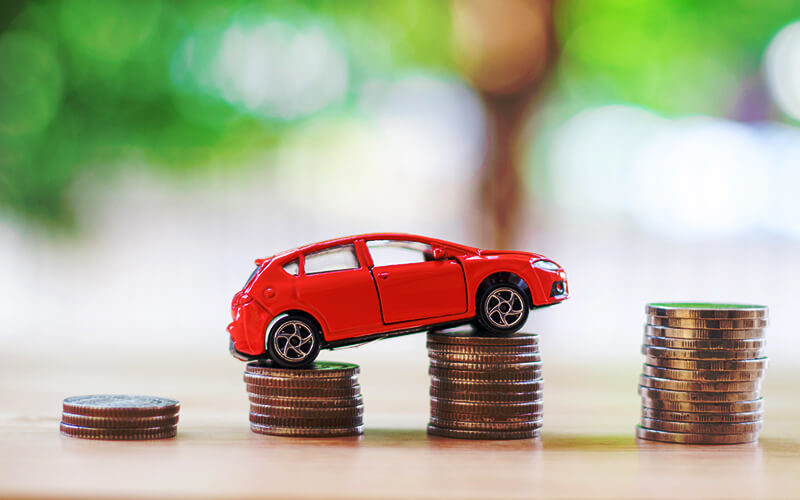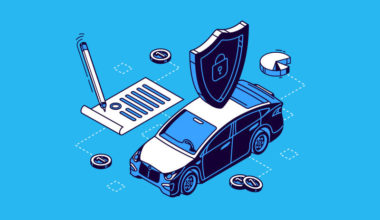IDV in car insurance stands for its Insured Declared Value, which means the exact market value of the car at a given time. This is the value that the insurance providers cover under the full insurance policy. Suppose, you buy a car for INR 10 lakh. But its market value or depreciated price falls to Rs. 9 Lakh after a year. If you claim at that time, then you can claim the same insurance amount equivalent to Rs. 9 Lakh. Full coverage is possible in case of heavy damage or complete loss of the car from your insurance provider.
What is IDV in a Car Insurance – Meaning & Importance
IDV in car insurance depends on the age and market price of the car. The insurer decides the insurance cover and grants them based on the market value of the car. For instance, if there are four models of a particular car. It is obvious that the latest or more advanced one will have a higher price value than others. So, the insurance-providing company will give more coverage for that model than the rest. Hence, the IDV in car insurance will be high.
Also, all vehicles, irrespective of the model type, go through gradual wear and tear. Therefore, its value depreciates with time. As the vehicles get older, the value depreciates and so does the insurance coverage. Therefore, IDV in car insurance also decreases as the cars get old.
Importance of IDV
The importance of the IDV (Insured Declared Value) is that it is the maximum coverage given. It is the highest amount that an insurance company will provide when the insured vehicle owner makes a claim. It depends on the depreciation value as well as the current market value of the car. The insurance providers decide the IDV when one goes to purchase the insurance policy for the car or domestic four-wheeler vehicle. The importance of the IDV in car insurance are as follows:
- IDV in car insurance decides the insurance cover and hence the premium. If the IDV in car insurance is high, it means higher coverage but also means higher premium payment. The IDV keeps falling and low IDVs means low premiums to be paid
- If the car/four-wheeler suffers damage, the insurers will estimate the costs. Then, they disburse the amount according to damage and the IDV at the time of getting the insurance. They fully pay the Insured Declared Value in case of complete loss or 75% damage
- Higher IDV also indicates higher risk due to higher car value in terms of market price
Sometimes, there is a deal between the insured and the insurer to undervalue the car. Thereby, there is a lower IDV in car insurance. The insured agrees to pay lesser premiums while the insurer avoids the provision of a higher amount of insurance.
Should you go for low IDVs in Car Insurance?
Many times, people opt for low IDVs in car insurance deliberately. They undervalue their car and four-wheeler domestic vehicles, to avoid paying more premium amounts. Although you can lower the IDV based on the depreciation value, you should never undervalue your car or any vehicle. It should not be below the market value to have a lower IDV. Lower IDV has low premiums because it provides less coverage. In case the vehicle suffers heavy damage or total loss, then your insurance compensation will also be less. It will be less than the exact value of the car. You will undergo a monetary loss in this case. If you set the right Insured Declared Value in car insurance, then you will be compensated accordingly.
Hence, don’t undervalue your four-wheelers and never opt for a lower IDV. This will limit your maximum claim and coverage despite being eligible for more.
How to Calculate the Insured Declared Value?
Insured Declared Value is calculated on the basis of the market price of the car minus the depreciation costs. It also counts the depreciation value of the add-on parts if the car has additional accessories. The formula for IDV in a car insurance calculation is as such:
1. New Car
This will take into consideration the market price listed by the manufacturing company. This is the ex-showroom price minus the depreciation costs. As the new car has a depreciation value of 5% up to six months, the IDV in car insurance goes up to 95%.
Insured Declared Value = Market Price listed by the Company – Depreciation Costs
2. Old Cars
The IDV in car insurance for old cars is also calculated in a similar fashion. It takes into consideration the same factors as that of the new cars. It is as per the current market value registered by the manufacturers and the depreciation value over the years.
Insured Declared Value = Current Market Value – Depreciation Value
3. Added Accessories in the Car
If you have accessories in the car, then the insurers count its depreciation cost. Both the market and depreciation values of these parts are added into IDV in car insurance. It is irrespective of the fact if the car is new or an old one. If it is a new car, then the depreciation costs of these added accessories are low. Whereas, the depreciation value rises as the cars get old.
Insured Declared Value = {Current Market Price registered by the Manufacturing Company – Depreciation Costs} + {Cost of Accessories – Depreciation Value of these Parts}
Make sure that your insurer gets the right IDV in car insurance when you renew your old car. Though the depreciation value of the car should be high due to more years, you can negotiate with the insurer. You can ask them to reduce the depreciation value at renewal. You can negotiate up to a 15% increase or decrease of the given IDV. The IDV in car insurance varies according to various insurers. Also, when you renew the car and replace the accessories, ensure that the right value and depreciation value are added into IDV.
Factors that Affect IDV in a Car Insurance
The following factors affect the IDV in car insurance-
- Manufacture, make & model of the car
- Registration date determining the age of the car
- City of registration matters for IDV in car insurance. It is because the market price differs in different states and cities, and hence, the IDV
- Private or company-owned cars
- Depreciation value of the cars over the years as in the table below
| Years | Depreciation (In Percentage) |
| Up to 6 months | 5% |
| More than 6 months but less than a year | 15% |
| Exceeding 1 year but not 2 years | 20% |
| Exceeding 2 years but not 3 | 30% |
| More than 3 years but not 4 years | 40% |
| More than 4 years but not 5 | 50% |
- Depreciation value over 5 years is done by surveyors/car dealers depending on the condition of the car. The insurance cover differs from one insurer to another. The insured can negotiate the limitation and the maximum cap of the policy
Wrapping it up:
The all-important IDV in car insurance is the deciding factor of the maximum coverage amount. It is the actual amount that the insurers will pay or reimburse for theft or heavy damage to the car. It is the monetary value of your vehicle. Therefore, it is important to do the right IDV calculation.
The IDV in car insurance is a mutual agreement between the insurer and the insured car owner. They can together negotiate to increase or decrease the IDV. If you increase the IDV more than the market and depreciation value of the car, you unnecessarily pay higher premiums. You pay more for the insurance of an old car. But, if you intentionally lower the IDV in car insurance to pay less premium, you are at a loss. It is because you get less coverage when there is a car theft or damage. You can take an additional policy of ‘zero depreciation’. This is to make sure that the depreciation costs do not affect the IDV in car insurance. This policy might not be available after 5 years of the car.



